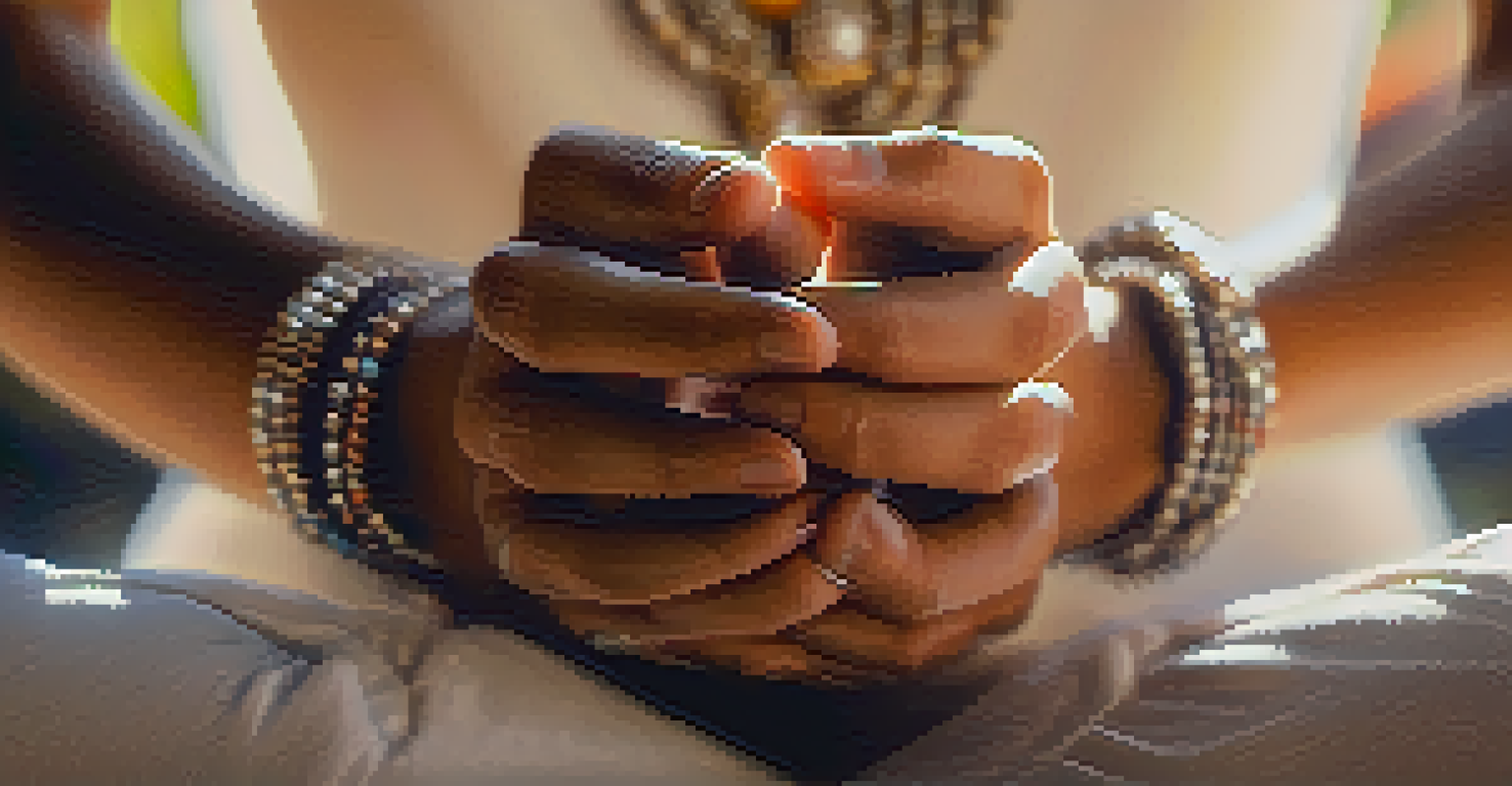Finding Your Voice: Expressive Yoga for Self-Discovery

Understanding Expressive Yoga as a Journey of Self-Discovery
Expressive yoga is more than just physical movement; it's a pathway to understanding your true self. This practice allows you to connect with your body, mind, and spirit, uncovering layers of your identity that may have been hidden. Through expressive movements, you can begin to articulate your feelings and thoughts, making it a profound form of self-exploration.
Yoga is the journey of the self, through the self, to the self.
Imagine being an artist, using your body as a canvas. Each pose, each breath is a brushstroke that reveals parts of you that you may not even know existed. The fluidity of this practice encourages spontaneity, allowing you to express emotions that might be difficult to articulate verbally.
In a world where so many of us feel pressured to conform, expressive yoga invites you to embrace your uniqueness. By tuning into your body and feelings, you can start to recognize what truly resonates with you, paving the way for deeper self-awareness and authenticity.
The Role of Breath in Expressive Yoga Practice
Breath is the cornerstone of yoga, and in expressive yoga, it takes on an even more significant role. Each inhale and exhale can act as a guide, helping you navigate your emotions and thoughts during practice. Focusing on your breath allows you to ground yourself, creating a safe space for self-exploration.

Consider your breath as a bridge between your mind and body. By consciously breathing, you can release tension and create a flow of energy that enhances your movements. This connection can lead to moments of clarity, where insights about yourself may emerge unexpectedly.
Expressive Yoga as Self-Discovery
Expressive yoga serves as a profound pathway to uncover and articulate your true self through movement and breath.
Moreover, breathwork can help you break through emotional barriers. When you focus on your inhalations and exhalations, you may find that you can express feelings you’ve kept bottled up, leading to a more profound understanding of your inner voice.
Creating a Safe Space for Self-Expression
A key element of expressive yoga is the environment in which you practice. Creating a safe space allows you to explore your emotions without judgment. Whether in a studio or at home, ensure that your environment feels welcoming and comfortable, filled with elements that inspire you.
The body is a sacred garment.
Think of this space as your sanctuary, where you can let go of daily distractions and truly focus on yourself. Soft lighting, calming scents, and soothing music can all enhance your experience, making it easier to connect with your inner voice.
When you feel secure in your space, you’re more likely to take risks in your practice. This freedom can lead to breakthroughs in self-discovery, as you allow your movements to express what words cannot.
Incorporating Movement to Reflect Your Feelings
In expressive yoga, movement becomes a language of its own. Each pose can be a reflection of how you feel in that moment, whether it’s joy, sadness, or frustration. By moving intuitively, you can channel these emotions, transforming them into physical expression.
Picture yourself flowing through a sequence of poses that resonate with your current feelings. If you're feeling heavy, perhaps you'll find yourself in grounding poses; if elated, you might express that through expansive, uplifting movements. This dynamic allows you to honor your emotions authentically.
The Role of Community in Yoga
Sharing your expressive yoga journey within a community fosters belonging, inspiration, and diverse perspectives that enhance self-discovery.
This embodiment of feelings through movement encourages a deeper connection to yourself. As you practice, you may discover new layers of your identity and learn to embrace the full spectrum of your emotions.
The Power of Intention in Your Practice
Setting an intention is a powerful tool in any yoga practice, particularly in expressive yoga. An intention acts as a guiding star, helping you focus your energy and deepen your self-exploration. It can be as simple as wanting to connect with your inner voice or as specific as exploring a particular emotion.
As you begin your practice, take a moment to reflect on what you want to achieve. This intention can shape your movements and breath, creating a more meaningful experience. It’s like having a roadmap for your journey of self-discovery.
When you anchor your practice with intention, you can cultivate a sense of purpose. This focus can lead to insights about yourself that may surface during your practice, enriching your journey toward self-awareness.
Embracing Vulnerability Through Expressive Yoga
Vulnerability is often seen as a weakness, but in expressive yoga, it becomes a strength. Allowing yourself to be vulnerable opens the door to authenticity and genuine self-expression. It’s an invitation to let go of societal expectations and connect with your true self.
Think of vulnerability as shedding layers of armor that you might have built over the years. In this safe space, you can explore your fears and insecurities, transforming them into powerful expressions through movement. This process can be incredibly liberating.
Embracing Vulnerability in Practice
By embracing vulnerability, expressive yoga transforms personal fears into authentic self-expression and deeper self-acceptance.
By embracing vulnerability, you may find that you can express emotions that have long been repressed. This journey can lead to profound self-acceptance and a deeper understanding of who you are.
Finding Community in Your Expressive Yoga Journey
While self-discovery is often a personal journey, finding community can enhance your experience in expressive yoga. Sharing your practice with others creates a sense of belonging and support, allowing you to witness diverse expressions of self. This connection can inspire and motivate you on your path.
Imagine a group of individuals moving together, each expressing their unique stories through their practice. This collective energy can be incredibly uplifting, reminding you that you are not alone in your journey. The shared experience fosters empathy and understanding among participants.

Additionally, engaging with a community can introduce you to new perspectives and techniques that enrich your practice. The exchange of ideas and experiences can be a catalyst for your own self-discovery, adding depth to your expressive yoga journey.